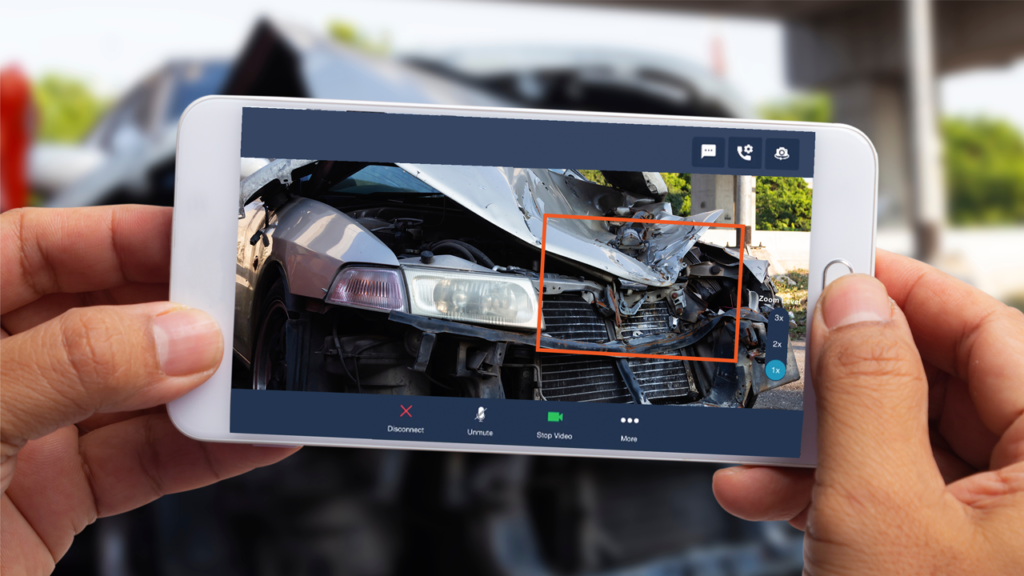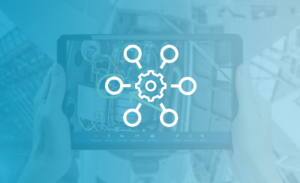Remote visual assistance is a video session with overlaid augmented reality (AR) tools in which a remote person, usually with a smartphone, is assisted by the other party using their PC. The video session differs from a standard one because the assister has an AR toolkit with which to help and guide the assistee. Features such as annotation, image capture, optical character recognition (OCR) and live pointer are used to clearly communicate what is required and to extract any useful information quickly and without delay. The same process can be used to perform a remote visual inspection although the remote party is employed to assist by essentially pointing the smartphone camera at the required objects while the inspector extracts the required information. In many use cases, RVIA can eliminate or significantly reduce the need for a site visit and so the main benefits are based on the financial costs associated with reduced time and travelling expenses for both parties. There are however lots of other benefits to RIVA which can be summarised as follows:
1. Quick and easy session initiation
In the context of a fast, hassle-free set-up, the best types of RVIA use functionality native to standard browsers in PCs and smartphones. This means that a session can happen between any two endpoints, there is nothing to install at either end. Most smartphones use Apple iOS or Google Android browsers which means that an RVIA session can be set up immediately between at least 95% of all smartphones and PCs. The remote party simply clicks on a hyperlink, sent by SMS or WhatsApp to initiate the session. The assister simply enters the smartphone number and clicks to start the process.
2. Increased productivity
It is easy to see how productivity can be increased using RVIA when a site visit generally includes a car journey or plane flight. Productivity can also be improved using the associated tools such as OCR to accurately read serial numbers or bar codes and automatic report document production. With a well-structured web ‘checklist’ the assister or inspector is able to work through a sequence of tasks easily with both hands-free to make notes and capture data, all of which would be more difficult to handle simultaneously whilst on site. Some organisations use small, highly skilled teams to support much larger numbers of lower-skilled field workers using RVIA which is considered to be the future in many sectors such as FM, Inspections and maintenance.
3. Reduced carbon footprint
The biggest gains to be made are by organisations that need to travel long distances to perform inspections, maintenance and support. By reducing the number of plane flights and car journeys carbon footprints can be reduced significantly.
4. Improving site visit effectiveness
Some site visits are essential for physical maintenance work but can be very costly if the site attendee is not prepared for the task or has been misinformed. A quick RVIA survey of the work environment followed by a pre-attendance survey report can eradicate aborted visits, compromised service and poor client satisfaction. The site attendee will generally perform better and more confidently and there are generally fewer disputes.
5. Better client satisfaction
Domestic visits can be very intrusive and irritating for householders particularly in the aftermath of COVID-19 especially if the attendee is late or ill-prepared for the required task and has to abort and re-visit. By conducting a pre-visit survey or RVIA session instead of the site visit, the householders are inconvenienced to a much lesser extent and intrusion is significantly reduced. By participating in the session the householder has ample opportunity to ask questions and fully understand the process which reduces misunderstanding and encourages trust.
6. Quicker response in urgent cases
For urgent requests for assistance where the remedial requirements are complicated or risky, RVIA can be extremely effective. If the remote party is to be guided to a resolution the instructions need to be clear and unambiguous and so a simple telephone call may make the situation worse. RVIA uses video and a variety of AR tools such as a live pointer and annotation so that instructions can be understood and implemented quickly. The session can be set up quickly without the hassle of scheduling, invites and PC applications.
7. AI image scanning
Artificial intelligence (AI) systems are able to scan moving or still images to recognise objects and anomalies with a great deal of precision. AI can be applied very well to RVIA during and after the session to help with object recognition, anomaly detection and for categorising and tagging media files for extracting maximum value from historic sessions. As an example AI can be used to spot a credit card, bank statement or person within an image that has been accidentally captured, it can then raise an alert or simply delete the file or obscure the area of concern to avoid a personal data breach. AI systems can be trained using datasets of historic media (sound and vision) to provide a very effective support service to participants in an RVIA session.
RVIA is a fairly new development to traditional video conferencing and is developing very quickly with more and more use cases being found. It is a very good example of service digitalisation and has numerous, easy to understand benefits to everyone. As uptake increases over the next few years, the RVIA sector is expected to generate upwards of $200 Billion in revenue.



